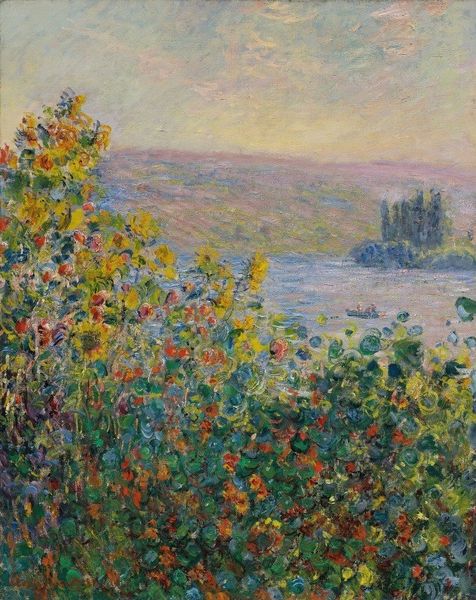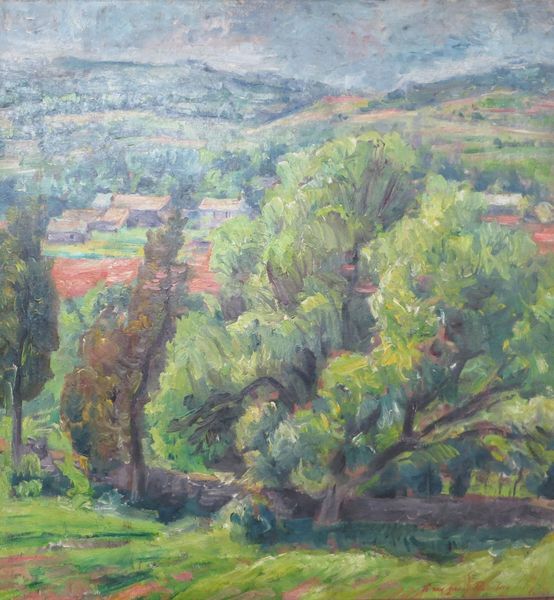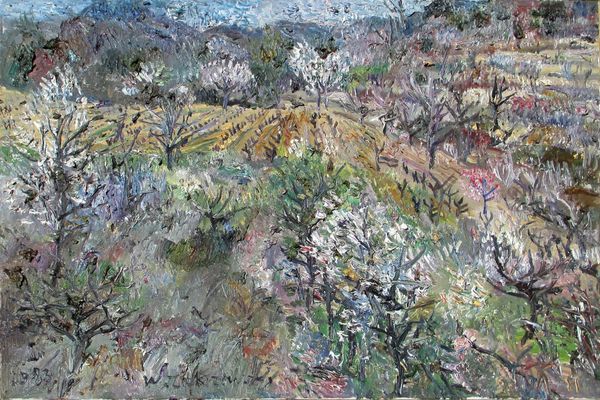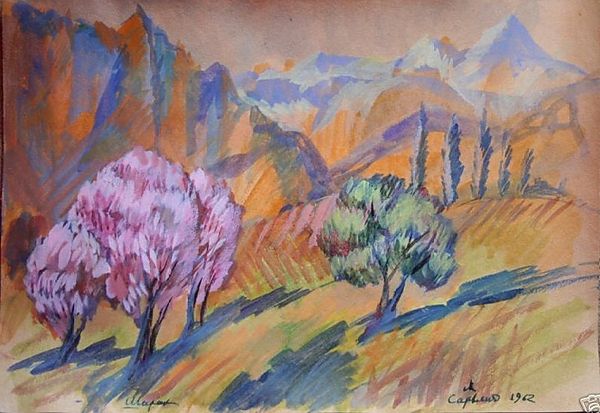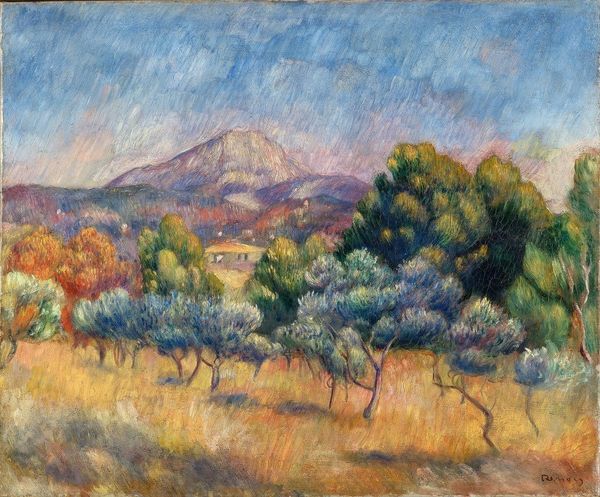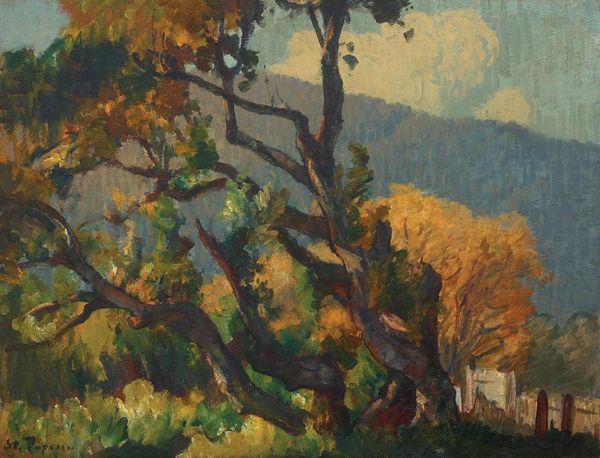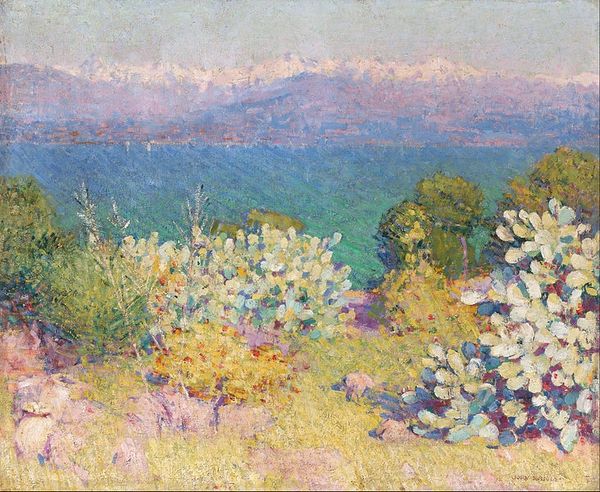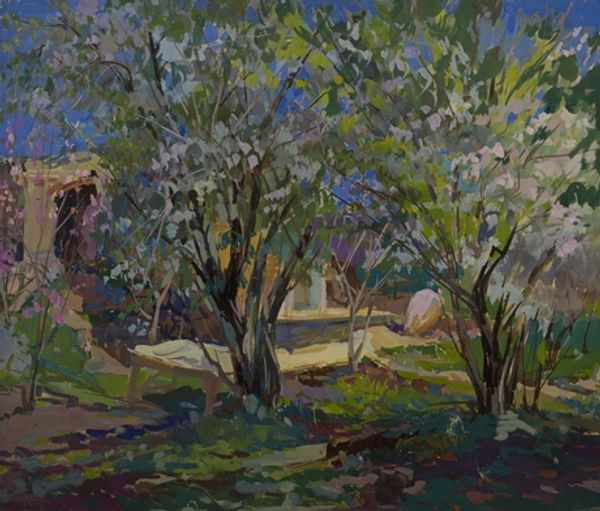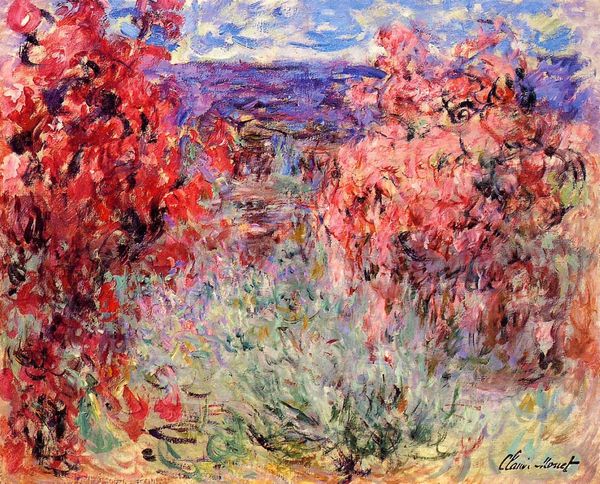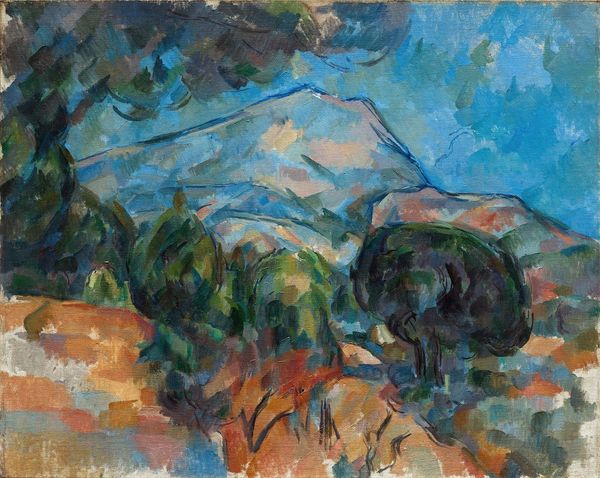
painting, plein-air, oil-paint, impasto
#
painting
#
plein-air
#
oil-paint
#
landscape
#
figuration
#
oil painting
#
impasto
#
romanticism
#
modernism
#
realism
Copyright: Kimon Loghi,Fair Use
Curator: Kimon Loghi’s oil painting titled "Beginning of Springtime" captures a landscape bathed in the nascent light of the season. The impasto technique is particularly noticeable, lending a tactile quality to the canvas. What strikes you immediately about it? Editor: There's a stillness, almost a muted quality, despite the name. The colours are gentle; it feels as though spring is holding its breath, just about to burst forth. I see also what could be interpreted as some darker symbols undercutting the spring theme; these more shadowy spots of the green area below create the sense that all might not be as regenerative as the title leads us to believe. Curator: It's true; there’s a visual tension. The foreground, with its layering of paint, does invite the eye, while the stark, almost vertical, trees create the sense of formal perspective. But as one follows them they reveal a different background entirely, mountains of another tonality. Let's consider that tension more deliberately. Is Loghi subtly suggesting that nature's beauty is inherently interwoven with darker, perhaps more complex, themes? Editor: The socio-historical context here is interesting. Considering the timeframe when such landscapes gained popularity, often commissioned by burgeoning capitalist classes as symbols of dominion, one might critically interrogate whose "spring" this really represents. Is it an elegy, masking potential exploitation? The seemingly muted colours, thus, are perhaps more deliberate than initially observed. They mute celebration. Curator: An astute observation! Your point connects nicely to the almost Romantic style in which the painting is delivered; indeed, a reflection, perhaps, of cultural tension. Now, to go back to composition, I want to call the viewer's attention to that striking patch of white blossoming in the centre of the piece. A focal point that both provides clarity as a pure image, and as contrast for all other hues. Editor: Exactly. Its very visibility forces the viewer into reckoning. The choice to prominently display what appears at first to be celebratory springtime is actually Loghi pushing us towards acknowledgement of what might otherwise be lost in the margins: for whom and at what cost this spring arises? Curator: A convincing point indeed. Understanding an artist like Loghi in totality truly calls us to explore the visual dialectic—it's far more multifaceted than a mere aesthetic display. Editor: Agreed. Engaging with art critically provides pathways to acknowledge underrepresented communities. Every canvas can then be the beginning of a more honest dialogue.
Comments
No comments
Be the first to comment and join the conversation on the ultimate creative platform.
